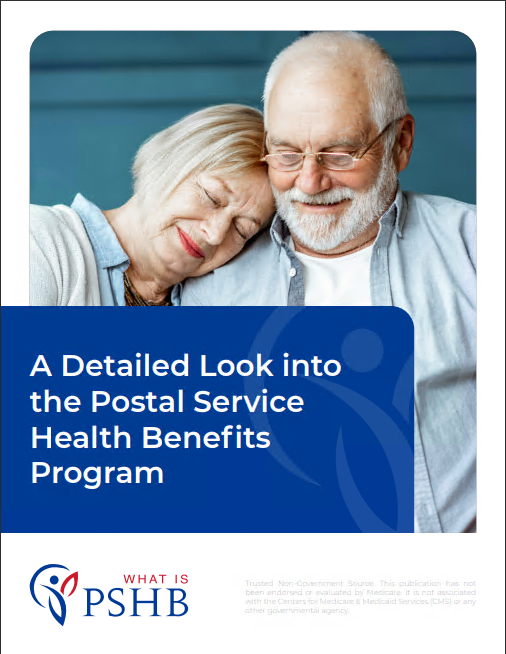Key Takeaways
-
Medicare Advantage plans in 2025 continue to evolve with changes that affect coverage, costs, and benefits for enrollees.
-
If you’re transitioning to the Postal Service Health Benefits (PSHB) program, understanding Medicare Advantage options is crucial to making the right choice for your health needs.
The Basics: What is Medicare Advantage?
Medicare Advantage plans, also called Medicare Part C, offer an alternative to Original Medicare. These plans are provided by private insurers and combine Medicare Part A (hospital insurance) and Part B (medical insurance). Many plans also include Part D prescription drug coverage and additional benefits like vision, hearing, and dental services. While these plans are regulated by Medicare, they differ in cost-sharing, coverage options, and networks.
For postal employees and annuitants navigating the transition to PSHB, Medicare Advantage may be worth considering, especially if you’re eligible for Medicare and want integrated coverage.
What’s New for 2025?
Prescription Drug Cap and Cost Control
One of the most significant changes this year is the introduction of a $2,000 annual cap on out-of-pocket prescription drug costs under Medicare Part D. This cap is a game-changer for enrollees who require high-cost medications, providing financial relief and eliminating the previous “donut hole” coverage gap. Many Medicare Advantage plans incorporate this feature, giving you more predictable drug expenses.
Payment Flexibility
2025 introduces the Medicare Prescription Payment Plan, allowing you to spread out-of-pocket costs for prescription drugs over the calendar year. This feature is ideal if you prefer manageable monthly payments instead of lump-sum expenses.
Adjustments in Plan Offerings
Medicare Advantage plans have undergone slight reductions in overall offerings, but there’s a notable increase in Special Needs Plans (SNPs) catering to individuals with chronic conditions or specific care requirements. This targeted approach ensures that more beneficiaries get tailored benefits that align with their unique health situations.
Focus on Preventive Care
Preventive services, including wellness visits, vaccinations, and screenings, remain a strong focus in 2025. Many plans are enhancing access to these services with little to no cost-sharing, promoting early detection and better overall health outcomes.
PSHB and Medicare Advantage: The Connection
As a PSHB enrollee, you’ll need to assess how Medicare Advantage fits into your overall healthcare strategy. Here are key considerations:
Coordinating Benefits
Medicare Advantage plans often work seamlessly with the PSHB program, offering cost-saving opportunities. For instance, if you’re enrolled in both, some plans may waive certain deductibles or reduce copayments. This integrated approach can result in lower out-of-pocket costs for enrollees who qualify.
Mandatory Medicare Part B Enrollment
If you’re a Medicare-eligible annuitant or family member under PSHB, enrolling in Medicare Part B is a requirement to maintain PSHB coverage. Medicare Advantage plans typically bundle Part B, so this enrollment step works in your favor.
Prescription Drug Benefits
Medicare Advantage plans include prescription drug coverage through Medicare Part D. For PSHB members, this can be a convenient way to manage medication costs while ensuring compliance with Medicare’s new $2,000 drug cap.
Costs and Financial Planning
Premiums and Out-of-Pocket Costs
Medicare Advantage plans are known for offering varying cost structures. While premiums can range widely, you’ll need to account for other expenses like deductibles, copayments, and coinsurance. The maximum out-of-pocket limit for 2025 is $9,350 for in-network services and $14,000 for combined in-network and out-of-network services. These limits protect you from catastrophic healthcare expenses.
Additional Savings Opportunities
Many Medicare Advantage plans provide extra benefits that reduce your overall spending. These can include:
-
Reduced copayments for specialists.
-
Waived deductibles for certain services.
-
Discounts on supplemental benefits like vision and dental care.
As a PSHB enrollee, these added savings can complement your existing coverage.
Choosing the Right Plan for Your Needs
Assess Your Health Priorities
Before selecting a Medicare Advantage plan, evaluate your current and anticipated healthcare needs. Do you expect to require frequent specialist visits or costly medications? If so, look for plans with low copayments and robust prescription drug coverage.
Review Networks and Providers
Medicare Advantage plans often rely on specific networks of healthcare providers. Ensure your preferred doctors and hospitals are included in the plan’s network to avoid unexpected costs. Some plans also offer out-of-network coverage, though typically at higher rates.
Compare Plan Features
Take the time to compare benefits across different plans. Consider factors like:
-
Coverage for preventive services.
-
Access to fitness programs or wellness incentives.
-
Availability of telehealth options.
These features can enhance your healthcare experience while aligning with your lifestyle.
Enrollment and Timelines
Open Enrollment Period
Medicare’s Open Enrollment period runs from October 15 to December 7 annually. During this time, you can:
-
Enroll in a new Medicare Advantage plan.
-
Switch between Medicare Advantage and Original Medicare.
-
Change your prescription drug plan.
Special Enrollment Periods
Life events, such as moving to a new service area or losing employer coverage, may qualify you for a Special Enrollment Period (SEP). If you’re transitioning to PSHB, ensure you’re aware of these exceptions to make timely changes.
Staying Informed
As a PSHB enrollee, you’ll receive an Annual Notice of Change (ANOC) outlining any modifications to your plan. Use this information to reassess your coverage and make adjustments during the next enrollment period.
Making the Most of Your Medicare Advantage Plan
Utilize Preventive Services
Take advantage of free or low-cost preventive care options. Regular screenings and wellness visits can help detect health issues early, potentially saving you time and money in the long run.
Monitor Your Spending
Keep track of your healthcare expenses throughout the year. This will help you stay within your plan’s out-of-pocket maximum and identify areas where you might save.
Stay Engaged
Many Medicare Advantage plans offer resources like health coaches, online portals, and wellness programs. Actively engaging with these tools can improve your health outcomes and maximize the value of your plan.
Ready to Navigate Your 2025 Healthcare Options?
Understanding how Medicare Advantage plans integrate with your PSHB coverage is key to making informed decisions. By staying proactive and reviewing your options carefully, you can enjoy comprehensive healthcare coverage tailored to your needs.









